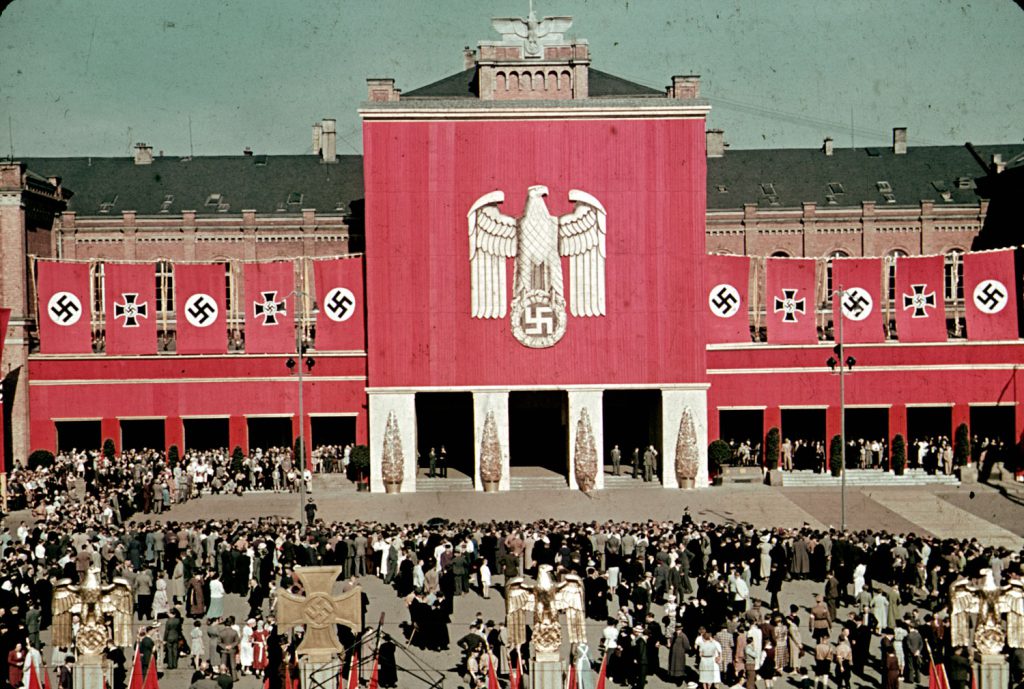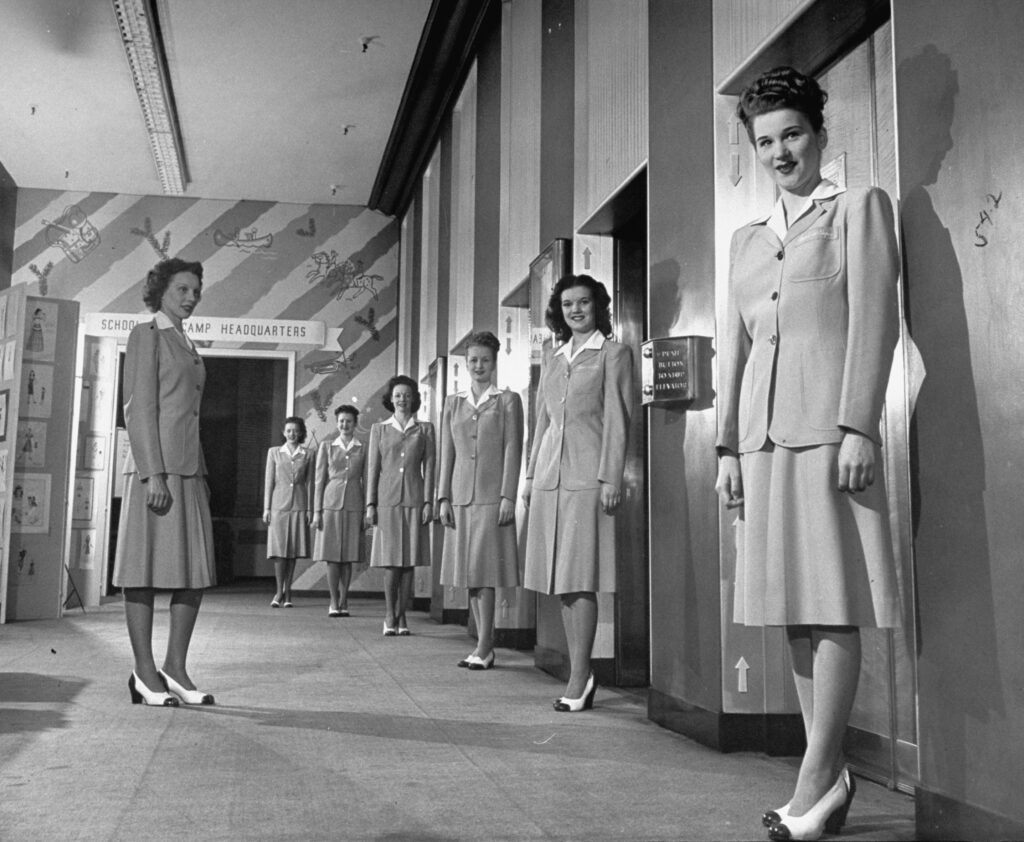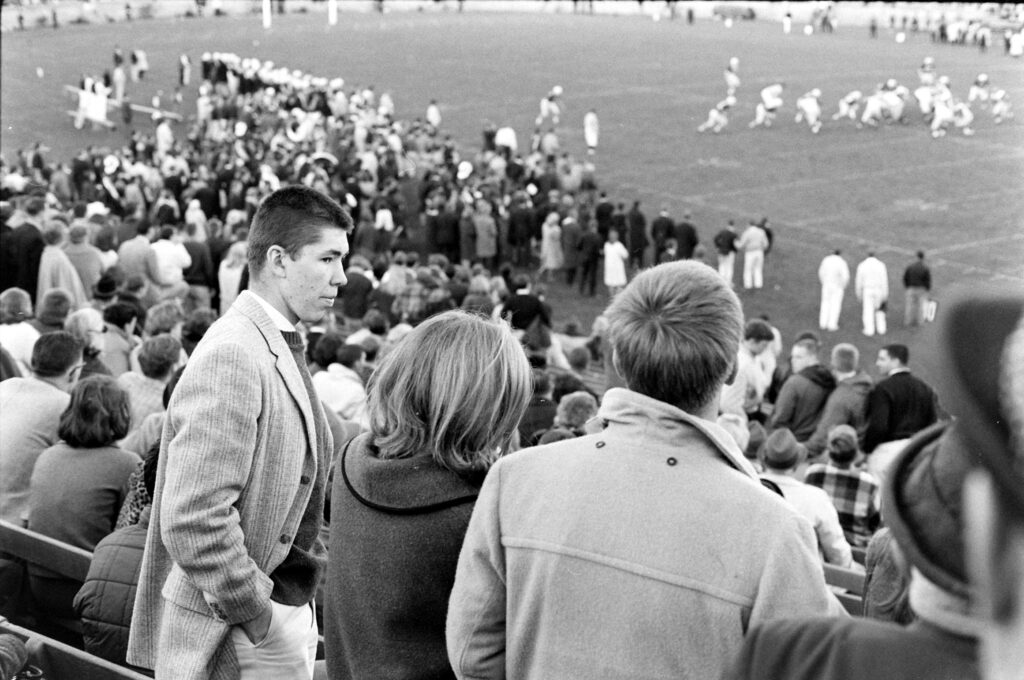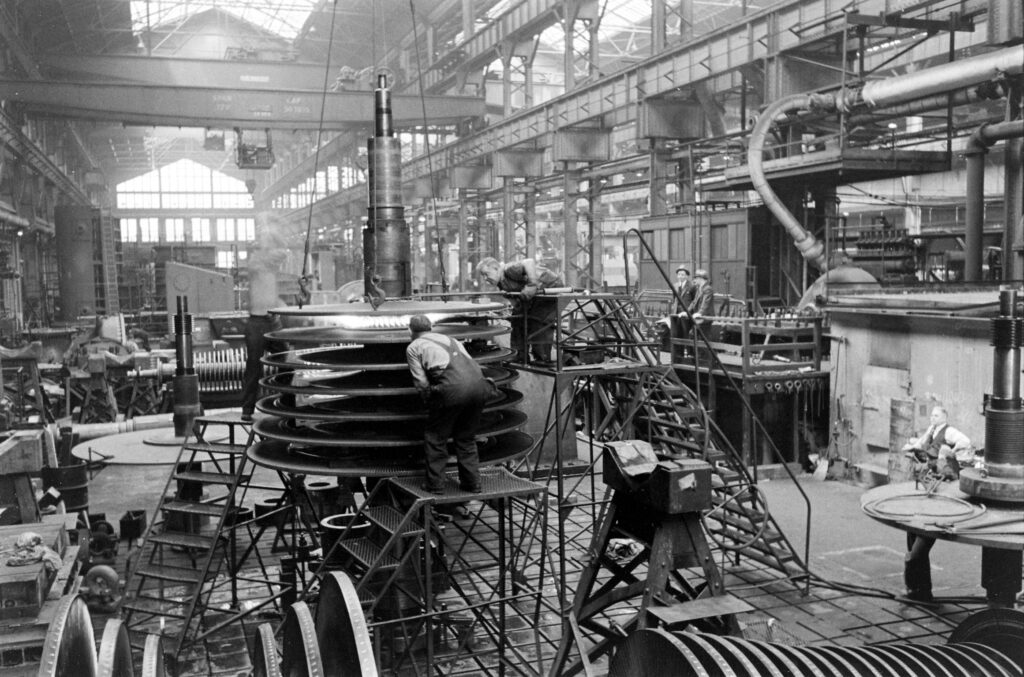Written By: Ben Cosgrove
A powerful insignia alone, Adolf Hitler once noted, “can spark interest in a political movement.” What Hitler did not say, but what is evident to anyone with even a tenuous grasp of 20th-century history, is that such an emblem can also provide a movement and a movement’s followers with an immediate communal identity.
The swastika, sometimes with its arms pointing to the left, sometimes to the right, has been around for thousands of years. It is one of the most ancient and prevalent of all sacred symbols, bearing vastly different meanings from culture to culture and context to context, from Hinduism to Greco-Roman architecture to Ireland’s great 8th-century illuminated Book of Kells. Today, it’s of course impossible for most people to see any swastika without associating it immediately with the Third Reich, Nazi Germany and, by extension, World War II and the Holocaust. The reason for this is disturbingly simple: Hitler and those who embraced his toxic vision as early as the 1920s were aware that a symbol with the resonance perhaps the subconscious resonance of a swastika, combined with the red, white and black of what Hitler called the “revered colors” of the old German Imperial flag, would not only be graphically striking: for countless Germans and Austrians, it would be spiritually striking.
In this gallery, LIFE.com takes a long, hard look at the aesthetics of the Reich’s propaganda machinery, from the single swastika to the epic torchlit celebrations that marked Hitler’s 50th birthday. Here are the Nuremberg rallies, where individuals are subsumed into a single worshipful organism. Here are the gargantuan Nazi banners, towering above a sea of human faces that fade into insignificance. Here are thousands of tanned, near-naked youth, re-enacting a manufactured, cobbled-together and thoroughly mythical past when “Aryans” gamboled beneath a Teutonic sun.
But perhaps the most fascinating aspect of the Third Reich’s deeply manipulative and seductive propaganda and especially the sense of invincibility and inevitable triumph that it sparked in the hearts of true believers is how ludicrous and, in the end, how perfectly mistaken it all was. Yes, Hitler, Goebbels, Himmler, Goering and the other genocidal gangsters did unleash a murderous nightmare in Europe, and for a few years a very few years it might have seemed as if the Nazi drive for domination was, in fact, unstoppable.
But then something happened that the Reich did not intend. Free people stood up. Britain resisted, mightily. America (finally) entered the war in December 1941 and along with the Soviet Union, the British, the Free French and so many other Allies, set about systematically demolishing the “invincible” German forces. Whatever the power of its symbols, Hitler’s Thousand-Year Reich lasted a little more than a decade, and when it was destroyed, its architect killed himself in a squalid underground bunker.

Adolf Hitler saluted troops of the Condor Legion who fought alongside Spanish Nationalists in the Spanish Civil War, during a rally upon their return to Germany, 1939.
Hugo Jaeger/Life Pictures/Shutterstock

Nazi rally, 1937.
Hugo Jaeger/Life Pictures/Shutterstock

Nazi and Italian flags draped from balconies welcomed Adolf Hitler during his state visit to Italy, 1938.
Hugo Jaeger/Life Pictures/Shutterstock

The Volkswagen Works cornerstone ceremony, near Wolfsburg, 1938.
Hugo Jaeger/Life Pictures/Shutterstock

Nuremberg, Germany, 1938.
Hugo Jaeger/Life Pictures/Shutterstock

Crowds cheered Adolf Hitler’s campaign to unite Austria and Germany, 1938.
Hugo Jaeger/Life Pictures/Shutterstock

The scene along the roadway to the Fallersleben Volkswagen Works cornerstone ceremony, Germany, 1938.
Hugo Jaeger/Life Pictures/Shutterstock

Nazi officials on their way to Fallersleben Volkswagen Works cornerstone ceremony, 1938.
Hugo Jaeger/Life Pictures/Shutterstock

Adolf Hitler at the swearing-in of SS standard bearers at the Reich Party Congress, Nuremberg.
Hugo Jaeger/Life Pictures/Shutterstock

Reich Party Congress, Nuremburg, Germany, 1938.
Hugo Jaeger/Life Pictures/Shutterstock

1937 Reich Party Congress, Nuremberg, Germany.
Hugo Jaeger/Life Pictures/Shutterstock

The League of German Girls danced during the 1938 Reich Party Congress, Nuremberg, Germany.
Hugo Jaeger/Life Pictures/Shutterstock

Reich Veterans Day, 1939.
Hugo Jaeger/Life Pictures/Shutterstock

Berlin was illuminated at midnight in honor of Hitler’s 50th birthday, April 1939.
Hugo Jaeger/Life Pictures/Shutterstock

Adolf Hitler and Joseph Goebbels (in box) at the Charlottenburg Theatre, Berlin, 1939.
Hugo Jaeger/Life Pictures/Shutterstock

The annual midnight swearing-in of SS troops at Feldherrnhalle, Munich, 1938.
Hugo Jaeger/Life Pictures/Shutterstock

Adolf Hitler made the keynote address at Reichstag session, Kroll Opera House, Berlin, 1939.
Hugo Jaeger/Life Pictures/Shutterstock

Reich Minister of Propaganda Joseph Goebbels spoke at the Lustgarten in Berlin, 1938.
Hugo Jaeger/Life Pictures/Shutterstock

Volkswagen Works cornerstone ceremony, near Wolfsburg, 1938.
Hugo Jaeger/Life Pictures/Shutterstock

Adolf Hitler spoke at the Lustgarten, Berlin, 1938.
Hugo Jaeger/Life Pictures/Shutterstock

Reich Party Congress, Nuremberg, Germany, 1938.
Hugo Jaeger/Life Pictures/Shutterstock





























